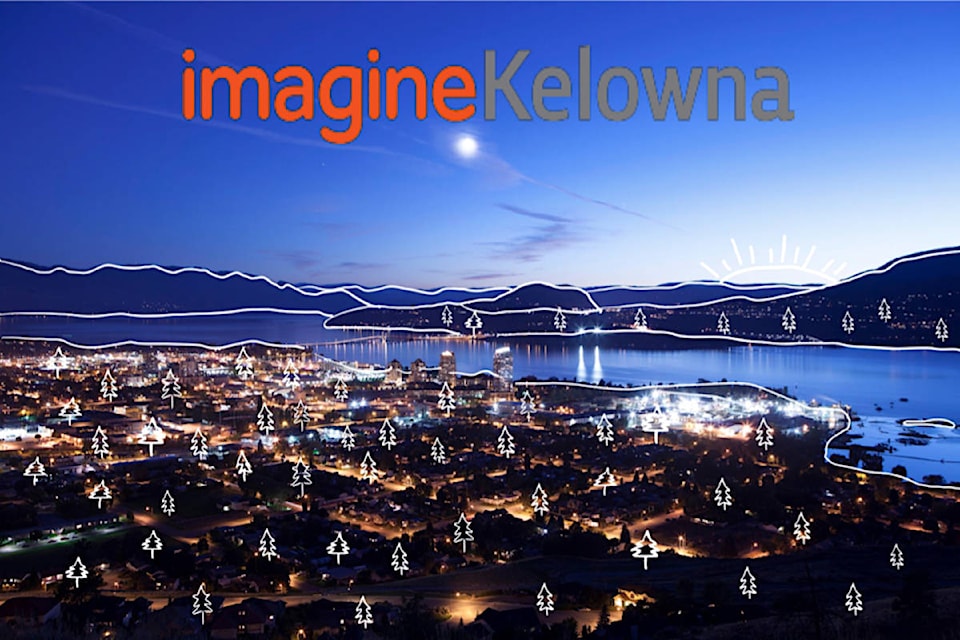After a year of gathering input from local groups, stakeholders and the general public, city staff have presented the draft principles and goals of its lengthy and wide-ranging Imagine Kelowna project to city council.
On Monday, the man spearheading the project for the city described the draft vision, values, principles and goals as representing the voice of the community, saying they were developed through the most comprehensive community engagement process and market research ever undertaken by the city.
Rafael Villarreal, manager of the Imagine Kelowna project said the strategic visioning process—unlike a more prescriptive plan undertaken by the city is 1992— is a quest for a philosophical direction and innovative concepts to help make the city more resilient and prepare it for the future.
“The Community Strategic Vision will help the city be more agile and better adapt to the fluid nature of the world by identifying the community’s core values, principles, and goals,” he said.
“It will also provide a framework to align the city’s comprehensive plans, strategies, and partnerships to deliver on those goals.”
As one Kelowna resident put it in a response to a call for input: “We can’t predict the future. Flexibility and adaptability are what’s going to help us through all the changes. Values last longer than plans, we can’t prepare for everything in the future.”
With the thoughts of more than 4,000 residents collected through online surveys, at open houses, community meetings, as well as through blog posts and a host of other collection methods, the draft principles include Kelowna being a connected, smarter, responsible and collaborative city.
The goals identified in the project include a focus on transportation, great public spaces, opportunities for all, world class arts and culture, inclusive and diverse prosperity, action on climate change, healthy neighbourhoods, the development of vibrant urban centres, preserving Okanagan Lake as a shared resource, protection of land, water and air, sustainable farming, a “just” community, promotion of entrepreneurship and resident-driven solutions to issues facing the city.
“Kelowna is at an awkward point in its growth,” said Villarreal. “It is neither a major urban centre, nor a small one. While this is scary for some people and others see it as an opportunity, the reality is that Kelowna is not a small town anymore. Kelowna is experiencing the challenges of growth but also its benefits.”
City staff plan to take the results of the input collected back to the public over the next few months through its existing communications channels, online and through partnerships and presentations and workshops with community groups, as well as at three information sessions to be held in Rutland, Mission and central city areas.
A final report will go to city council in the spring.
As part of the presentation to council Monday, Freida Morales, a Grade 11 student at Immaculata High School addressed the mayor and councillors.
She was one of 600 students who took part in the Imagine Kelowna exercise through the local school district and she urged council members to look to the future in their decision-making, saying what they decide today will be what her generation will have to live with in the future.
“Change has to start somewhere,” she told council. “It might as well start with you. You may be planting seeds for a garden you may never see.”
To report a typo, email: edit@kelownacapnews.com.
<>@KelownaCapNews
newstips@kelownacapnews.com
Like us on Facebook and follow us on Twitter.
